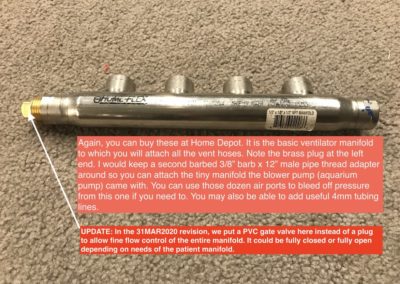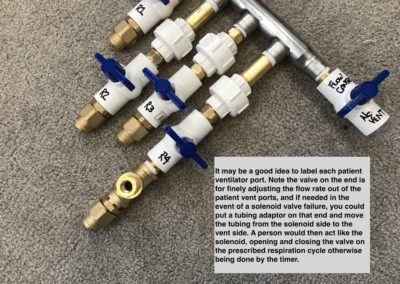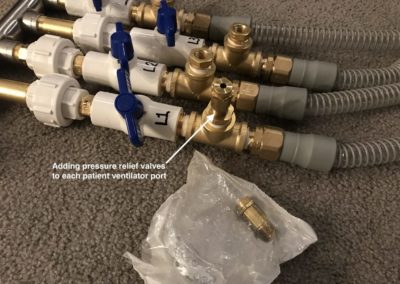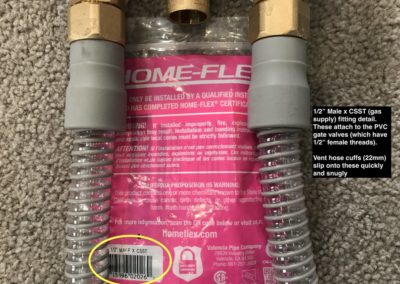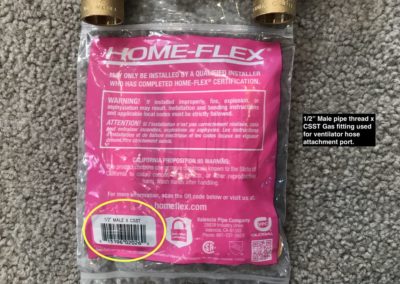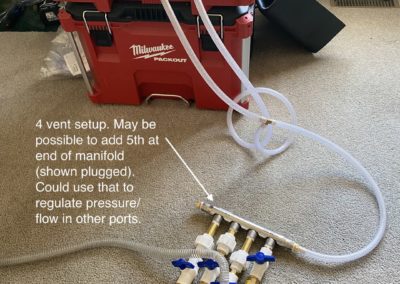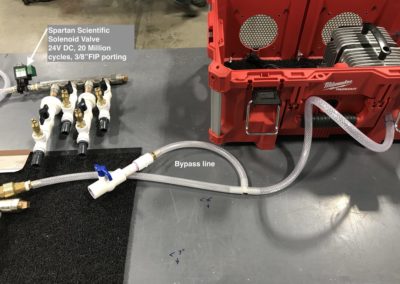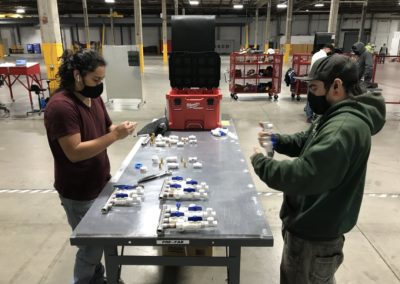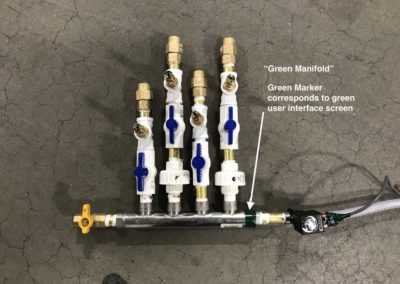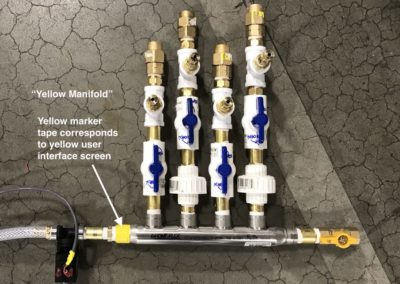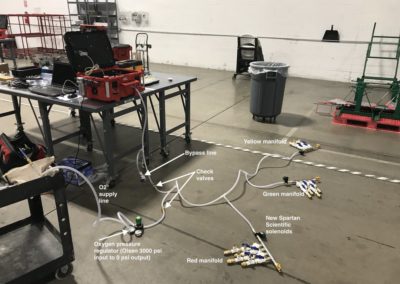Build Rev 2
Manifold assemblyNote: Some of the photos in this section are from the prototype and are included here for visual reference only.
Rev2 notes: To prevent the air pump from “deadhead” conditions (i.e. not displacing the air out of its compression chamber, which overheats it and shortens its life), we have added a Bypass line to the Rev2 units. This allows different I:E respiratory rhythms to be run on each patient manifold that could potentially have all three manifolds closed down during part of the cycle. If this occurs, the Bypass line will allow air flow produced by the pump to escape. If operating in CPAP mode on any manifold (i.e. no zero flow state), bypass air can be eliminated by fully closing its ball valve. However, it may be advisable to use bypass air in all manifold modes (including CPAP) so that the FiO2 can be regulated within a broader range. Finally, it is essential that pressure relief valves adjusted to 45cm H2O be added to each patient ventilator port. Some physicians may want lower settings on some or all patient ports to avoid barotrauma. Learn how to adjust them here.
Bypass line. Added to allow individual manifolds to improve FiO2 range and avoid deadheading the pump.
Legal Disclaimer
The content on this website is being released in this manner to maximize the potential public benefit during this urgent need for measures to respond to the COVID-19 crisis, including promoting potential ventilator manufacturing methods.
The content has not been reviewed or approved by the U.S. Food and Drug Administration (FDA). Interested readers are encouraged to contact the FDA and review available FDA materials, including their guidance on ventilators as well as the Department of Health and Human Services (DHHS) declaration of liability immunity for medical countermeasures against COVID-19.
PLEASE NOTE: The content has not been peer reviewed. The Authors make no representations or warranties of any kind (express or implied) relating to accuracy, safety, usefulness, usability, marketability, performance, or otherwise of the content released here. The Authors disclaim all express and implied warranties of merchantability and fitness of the content for a particular purpose, and disclaims all express and implied warranties regarding non-infringement of any patent, copyright, trademark, or other rights of third parties in the content or use of the content, or in the making, using, or selling products or services by any person or entity.
People or entities attempting to use the content in any way, including creating products or offering services, assume all risk and responsibility related to those uses, including all legal and regulatory compliance, safety, efficacy, performance, design, marketability, title, and quality. The Authors assume no liability related to the actions of third parties and in respect of any infringement of any patent, copyright, or other right of third parties.
The content has not been used in testing with humans at this time.
The Authors’ names and logos are trademarks or other exclusive property of the Authors. Readers of the content shall not use the name or logo of any Author in any way for publicity, advertising, or other commercial purposes, including linked to the reader’s products or services. Readers of the content shall not make statements or representations that, in Author’s sole judgment, deliberately or inadvertently claim, suggest, or give the appearance or impression of a relationship with or endorsement by that Author.
The Authors are proud of their affiliation with the University of Colorado as alumni and, in the case of Dr. Thomas Greany, as a professor at the Anschutz Medical Campus. The Authors express their appreciation to the University of Colorado for its support of this project.

